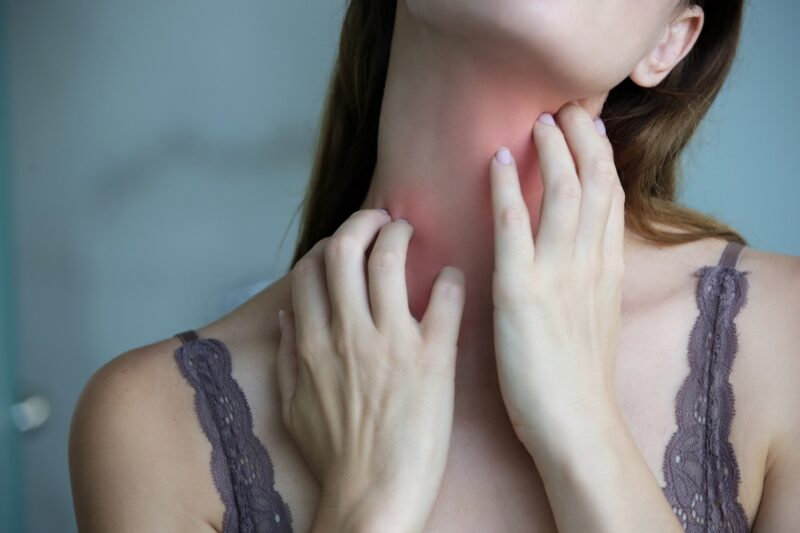A red, itchy rash can cause confusion and frustration, especially when it looks similar to another common condition. Ringworm and eczema often appear alike at first glance, but they come from very different causes and need different treatments. Ringworm usually forms a round, scaly patch with a clear center, while eczema tends to create dry, inflamed skin that lacks a defined edge.
Recognizing these visual clues early helps prevent the spread of infection and avoids using the wrong treatment. A closer look at the shape, texture, and pattern of the rash can reveal which condition it is. With a clear understanding of these differences, anyone can feel more confident about what might be affecting their skin.
The next sections explore how to tell these rashes apart by sight, what causes them, and how professionals confirm a diagnosis. By learning to identify the signs, it becomes easier to take the right steps toward proper care and relief.
Visual Differences Between Ringworm and Eczema
Both ringworm and eczema can cause red, itchy patches, but their shape, border, and texture often reveal which one a person has. The way each rash spreads, changes over time, and appears on certain body areas also helps doctors and patients tell them apart.
Shape and Border Clues
Ringworm usually forms a round or oval rash with a clear edge. The center often looks lighter or even normal, creating a ring-like outline. The border may appear slightly raised, scaly, or darker than the surrounding skin. This shape helps identify ringworm faster than eczema.
Eczema, by contrast, has irregular patches that do not follow a circular pattern. The edges blend into nearby skin without a sharp boundary. These patches can merge into larger areas, especially after scratching. Because of this, eczema often looks uneven and less defined.
People who struggle to tell these two apart can use tools such as a short ringworm vs eczema quiz or consult a dermatologist for a more accurate diagnosis, helping to ensure the right treatment is pursued.
Colour and Texture Patterns
Ringworm often appears red or pink on light skin and brown or gray on darker skin tones. The surface tends to be dry, flaky, and slightly scaly. In some cases, tiny bumps or blisters form near the outer edge of the ring.
Eczema can vary more in colour. It may look red, brown, or gray, sometimes with small raised bumps that leak fluid if scratched. The skin can feel rough and thick after repeated irritation. Over time, eczema patches may darken or lighten compared to nearby skin.
Texture also sets them apart. Ringworm feels rough mainly at the border, while eczema often feels uneven across the whole patch. This difference helps narrow down which condition is present.
Common Locations on the Body
Ringworm tends to appear on exposed skin such as the arms, legs, neck, or face. It can also show up on the scalp, groin, or feet, depending on the type of fungal infection. Because it spreads through contact, it often develops in areas that touch contaminated surfaces or other people.
Eczema usually affects the inner areas of joints like the elbows, knees, wrists, and ankles. It also appears on the chest, neck, and eyelids. Infants often develop eczema on the cheeks or scalp. These locations relate more to skin sensitivity and dryness rather than infection.
Recognizing where the rash forms helps guide whether antifungal or moisturizing treatment is more appropriate.
Progression and Spread of Rash
Ringworm tends to spread outward from a central point. The center may start to heal as the outer edge expands, creating a ring effect. Without treatment, new rings can appear nearby or even on other people through skin contact or shared items.
Eczema behaves differently. It usually flares and fades over time, often lasting weeks or longer. Scratching can make it worse and cause the rash to spread unevenly, but it does not pass from one person to another. Eczema often returns in the same spots, especially during dry weather or exposure to triggers.
Observing how the rash changes or spreads over days helps confirm whether it is fungal or inflammatory.
Underlying Causes, Contagion, and Diagnosis
Ringworm and eczema differ in cause, spread, and diagnosis. One stems from a contagious fungal infection, while the other relates to immune and skin barrier issues. Accurate diagnosis helps guide treatment and prevents unnecessary medication use.
What Causes Ringworm and Eczema
Ringworm develops from a fungal infection caused by dermatophytes. These fungi feed on keratin in the skin, hair, and nails. They thrive in warm, moist areas such as locker rooms or shared towels. Contact with infected people, animals, or surfaces can spread fungal spores.
Eczema, on the other hand, is a chronic skin condition linked to an overactive immune system and a weak skin barrier. This allows moisture to escape and irritants to enter. Genetics, allergies, and environmental triggers such as soaps or stress often lead to eczema flare-ups.
Both conditions cause red, itchy patches, but their roots differ—fungal growth versus immune dysfunction. Recognizing this difference helps determine whether antifungal or anti-inflammatory treatment is needed.
How Contagious Are These Skin Conditions
Ringworm spreads easily through skin-to-skin contact or shared personal items. Fungal spores can survive on clothing, bedding, and surfaces for days. Pets can also carry the fungus and pass it to humans. Because of this, ringworm often appears in multiple people within a household or sports team.
Eczema is not contagious. No fungus, bacteria, or virus causes it, so it cannot pass from one person to another. However, scratching eczema patches can break the skin, which may lead to a skin infection. That infection might require antibiotics, but it still does not make eczema itself contagious.
Proper hygiene, clean linens, and avoiding shared items reduce the spread of ringworm. For eczema, managing triggers and keeping skin moisturized helps limit flare-ups.
Diagnosis and When to See a Dermatologist
A dermatologist can often tell the difference between ringworm and eczema by looking at the skin. However, both can appear similar, especially nummular eczema, which forms round patches.
To confirm ringworm, the doctor may perform a skin scraping and examine it under a microscope for fungal spores. In uncertain cases, a skin biopsy may rule out other conditions.
People should see a dermatologist if they notice circular, itchy patches that do not improve with over-the-counter creams. Delayed or incorrect treatment can allow a fungal infection to spread or cause eczema to worsen.
Risk Factors and Genetic Predisposition
Several factors raise the risk of these conditions. Ringworm risk increases with close contact sports, humid environments, or sharing personal items. People with a weakened immune system also face a higher risk because their bodies cannot fight fungal infections as effectively.
Eczema often runs in families. Genetic changes that affect the skin barrier make it easier for irritants to cause inflammation. People with asthma, hay fever, or food allergies often have eczema as part of an allergic tendency.
Both conditions can appear in any age group. However, eczema often starts in childhood, while ringworm can affect anyone exposed to fungal spores. Understanding these risk factors helps reduce recurrence and guide preventive care.
Conclusion
Ringworm and eczema share some surface traits, yet their causes and appearances differ in clear ways. Ringworm forms a round patch with a red, raised edge and a clearer center. Eczema often looks dry, thick, or scaly without a sharp border.
A rash that spreads fast or appears after contact with others often points to ringworm. A rash that stays in one area and relates to dryness or allergies often suggests eczema.
Accurate identification helps guide proper care. Antifungal creams treat ringworm, while moisturizers and mild steroids help calm eczema.
People who feel unsure about a rash should seek medical advice to confirm the cause and choose the right treatment.







